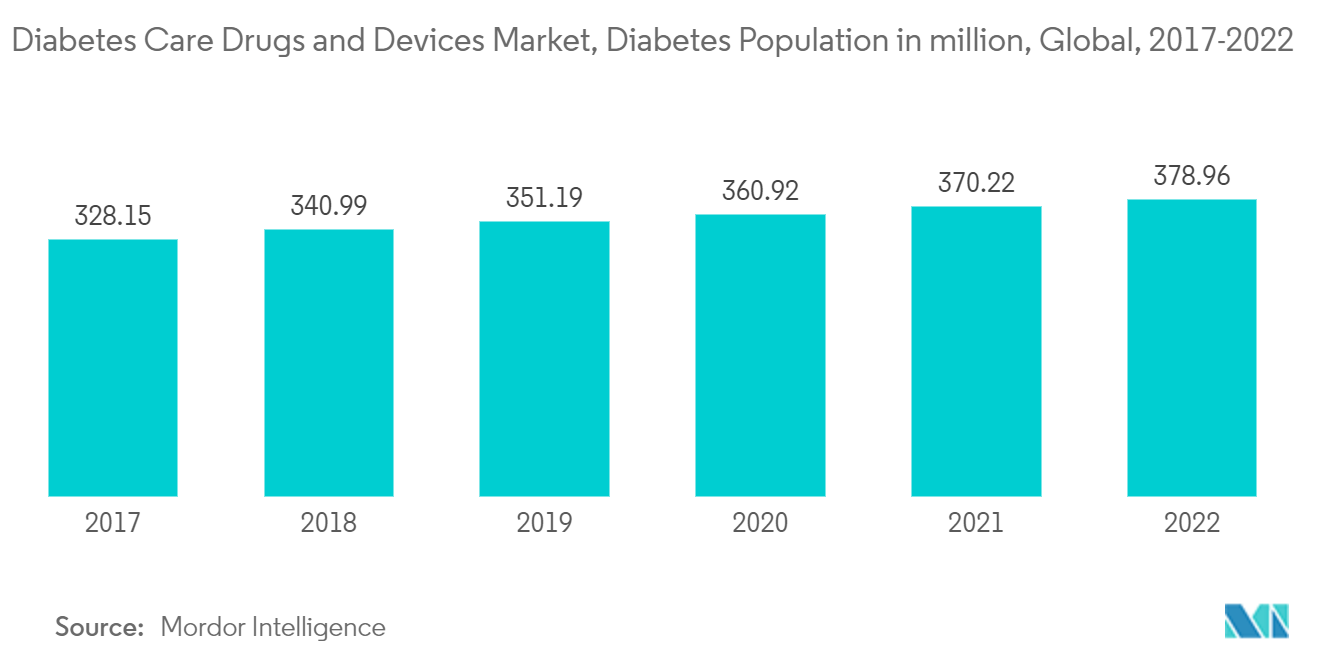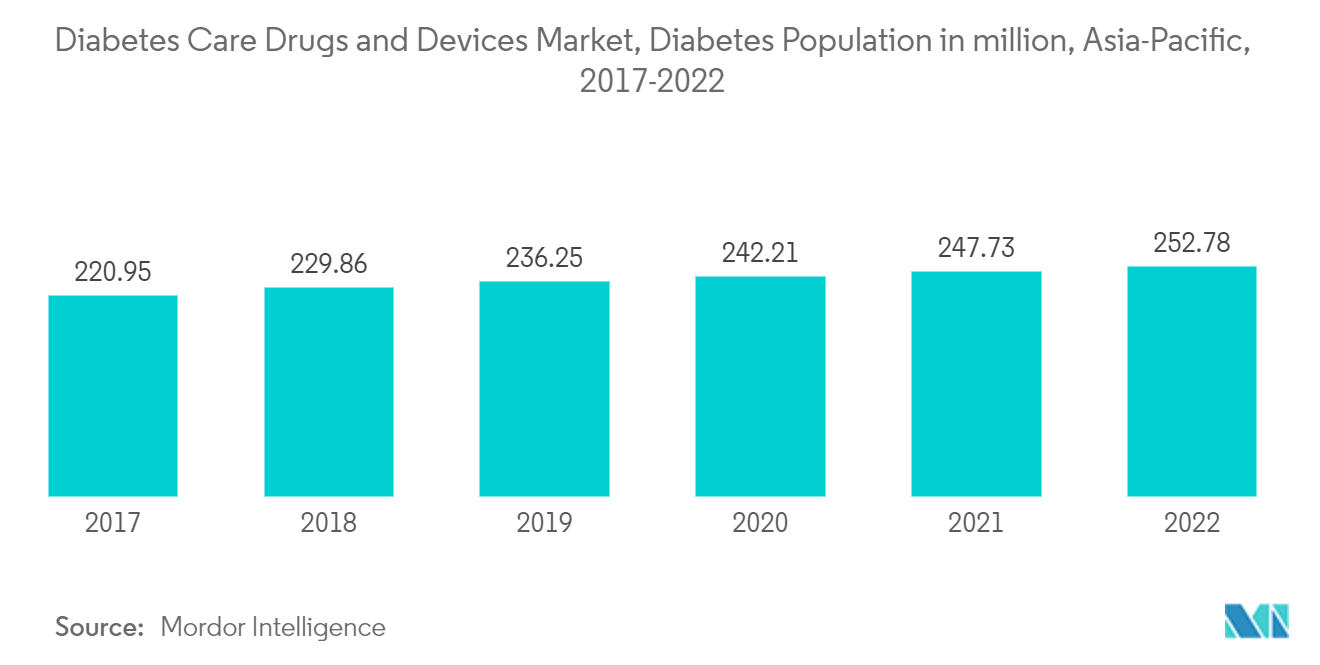Market Trends of Mergers And Acquisitions In The Diabetes Industry
Rising Diabetes Prevalence encouraging players to focus on enhancing growth and market presence through Mergers and Acquisitions, Partnerships, and Collaborations
The diabetes population is expected to rise by 1.92% globally over the forecast period.
According to IDF, the adult diabetes population in 2021 was approximately 537 million, likely increasing by 643 million in 2030. The rate of newly diagnosed Type-1 and Type-2 diabetes cases is seen to increase, mainly due to obesity, unhealthy diet, and physical inactivity. An increased number of people are at risk of prediabetes, which can further lead to Type-2, causing risk factors for complications, acute and long-term complications, and deaths. The increased prevalence of diabetic patients and healthcare expenditure worldwide are indications of the increased inclination toward diabetic products.
WHO launched a Global Diabetes Compact, a global initiative aiming for sustained improvements in diabetes prevention and care, focusing on supporting low and middle-income countries. The compact is bringing together national governments, UN organizations, nongovernmental organizations, private sector entities, academic institutions, philanthropic foundations, people living with diabetes, and international donors to work on a shared vision of reducing the risk of diabetes and ensuring that all people who are diagnosed with diabetes have access to equitable, comprehensive, affordable, and quality treatment and care.
Mergers and acquisitions in the diabetes market have increased significantly, with buyers and sellers looking to create more strategic, operational, and financial values. The key factors driving the diabetes market's mergers and acquisitions are strategic changes to achieve the critical size required in the segment and large mergers that allow the bundling of subcritical businesses to build new platforms. Efficient capital allocation across the industry is the other driving force behind mergers and acquisitions. Through Mergers and acquisitions activity, players in the diabetes market are expanding their product offerings. Also, players focus on expanding their geographical reach through Mergers, acquisitions, and partnerships with other established players. In August 2021, United Kingdom digital health startup Gendius signed a contract with AstraZeneca to confirm its strategic partnership to develop remote diabetes management and support patients in Gulf Cooperation Council (GCC) countries. Such partnerships will help the market players' growth over the forecast period.

Companies Focusing on Growth Opportunities in Asia-Pacific Region
According to the International Diabetes Federation's latest estimates, the diabetes population in Southeast Asia and the Western Pacific region are projected to increase to 68% and 26% respectively, by 2045. Asia-Pacific, with the largest diabetic population worldwide, offers significant growth opportunities for players in the market. Hence, players focus on growing in the key markets of the region through collaborations and strategic partnerships. Players are entering strategic collaborations to jointly explore integrated solutions aimed at advancing intelligent healthcare in the region.
Companies also focus on expanding their product offerings in key growth markets in the region through partnerships. For instance, in March 2023, Astellas Pharma Inc. entered into an agreement with Roche Diabetes Care Japan Co., Ltd. for the development and commercialization of Roche Diabetes Care's Accu-Chek Guide Me blood glucose monitoring system with advanced accuracy as a combined medical product with BlueStar. BlueStar is an FDA-cleared digital health solution for diabetes patients, developed by Welldoc, Inc., and is currently marketed in the United States and Canada. Astellas and Welldoc are jointly developing BlueStar in Japan. In the future, Astellas will aim to obtain regulatory approval and reimbursement as a combined medical product.
Such strategies are expected to drive the growth of the players in the region during the forecast period.


